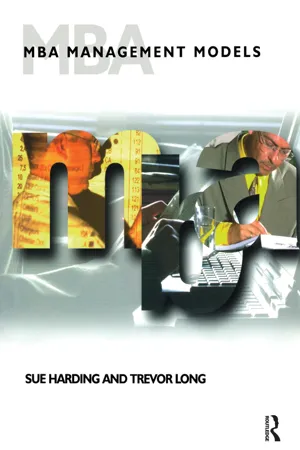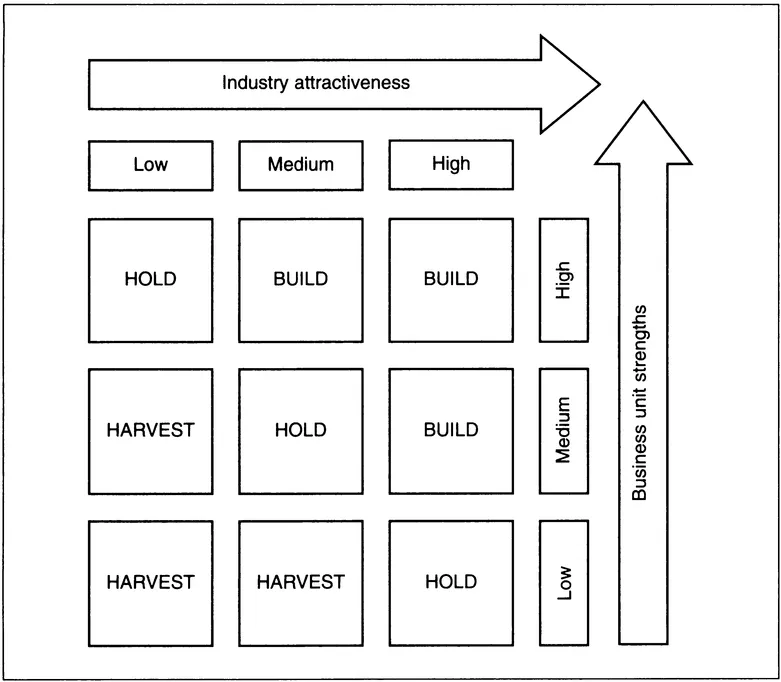
- 240 pages
- English
- ePUB (mobile friendly)
- Available on iOS & Android
MBA Management Models
About This Book
If you're a student on an MBA or management course, you'll be expected to demonstrate a knowledge of a range of models. This textbook collects together the 45 models most likely to be required, summarized in a standard format. Each entry contains a diagram of the model; the principles on which it's based; underlying assumptions; guidance on application, and relevant issues; related models; and sources of further reference. Models are organized by subject area: accounting; business strategy; human resources; organizational strategy; and strategic marketing. An alphabetical matrix index means you can find the right model quickly. MBA Management Models will be invaluable to students working on written assignments, projects, case studies or dissertations, and to practising managers too.
Frequently asked questions
Organizational strategy
29 Company position/industry attractiveness screen

Principle
Assumption
Elements
Industry attractiveness
Business unit strengths
Build
Hold
Harvest
Issues
Business unit definition
Negotiations between managers
Other techniques
Applications
Strategy formulation
Project funding
Restructuring
Market planning
Related models
- Ansoff's Box (see pp. 197-9)
- Barriers and profitability (see pp. 47-50)
- Company position/industry attractiveness screen (see pp. 137-40)
- Contrasting characteristics of upstream and downstream companies (see pp. 55-8)
- Five forces (see pp. 59-63)
- Five Ps for strategy (see 65-8)
- Nine specimen standardized strategies (see pp. 201-5)
- PESTLIED (see pp. 83-6)
- PIMS competitive strategy paradigm (see pp. 207-10)
- Porter's Diamond (see pp. 87-90)
- Related diversification grid (see pp. 91-3)
- Resource allocation at corporate level (see pp. 177-80)
- Value chain (see pp. 191—4)
Main reference
30 Cultural web

Principle
Assumption
Elements
Paradigm/recipe
- stories: stories of past achievements, procedural activities
- symbols: indications of status - for example titles, office size, job perks
- rituals and routines: any well established formal or informal procedures
- power structures: traditional power base, promotion rights and expectations
- control systems: formal regulation within all functional areas
- organizational structures: the formal relationship between the different elements of an organization - for example, functional/centralized/hierarchical.
Issues
Paradigm changes
Integration
Weakness
Ease of change
Applications
Analysis
- of a whole organization, a business unit or team
- of an industry - for example banking
- of the interaction between factors - for example, how formal controls may be compromised by power structures.
Cultural change
Related models
- Action-centred leadership (see pp. 101-3)
- Belbin's team roles (see pp. 105-8)
- Dynamics of paradigm change (see pp. 145-8)
- Four organizational cultures (see pp. 149-53)
- Group development (see pp. 109-12)
- Herzberg's Motivator-Hygiene Theory (see pp. 113-15)
- Managerial grid (see pp. 121-4)
- Organic versus mechanistic management styles (see pp. 169-72)
- Related diversification grid (see pp. 91-3)
- The seven 'S's framework (see pp. 181-5)
- Situational leadership (see pp. 131-4)
Main reference
Table of contents
- Cover
- Half Title
- Dedication
- Title
- Copyright
- Contents
- Acknowledgements
- Introduction
- Matrix index
- Accounting/economics
- Business strategy
- Human resources
- Organizational strategy
- Strategic marketing
- Appendix
- Subject index